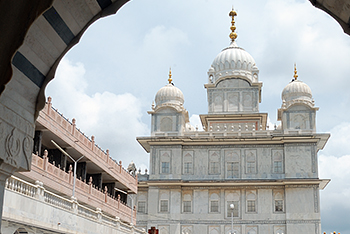
Sharpness in the photographs tends to elude even the most seasoned photographers. That’s because sharpness is a perception; and that it is affected by many factors adds to the confusion. Also, note that sharpness and focus are different entities — an image can be in focus yet not sharp. Sharpness is controlled by many factors and at many stages of the photography work-flow. Basically it’s a product of the following:
- Equipment
- Settings
- Technique
- Post-Production
Thus here are some tips to get sharp images.
- Quality Of Lens: The quality of the lens can be the most defining factor for sharpness. Though in this age almost all D/SLR lenses have excellent optics, some of the lenses manufactured by third-parties may not be have such good optical characteristics. The lens characteristics can introduce color fringing, linear distortion, coma, spherical aberration, falloff, and an endless list of scary photo-jargon. Also prime (fixed focal length) lenses tend to be better than general purpose zoom lenses which pose engineering challenges for the manufacturers.
- Camera Quality: Cameras of the same grade don’t have a huge difference in image quality. But when you consider the differences between a compact, prosumer, DSLR and a full-format, the sharpness “and” the image-quality with be considerably different.
- Poor Filters: Filters often tend to be the bottleneck as far as optics are concerned. A cheap filter fitted over costly optics can be as destructive as a cheap camera, a cheap lens or a combination of both. Invest in high quality filters.
- Clean Optics: And while we are talking about lenses and filters, make sure that you have a handy kit to clean the front most glass/filter as and when you require. Here’s a short tutorial on lens cleaning tips and tools.
- Small Aperture: The sharpness characteristics of every lens varies by the aperture and generally deprecates at both extremes. While you can do some experiments and tests to figure the sharpness at both ends, generally every good lens has acceptable sharpness through out it’s aperture. Very small apertures, introduce chromatic aberration which kills the sharpness in the picture.
- Proper Focus: If the scene itself is not in focus, it will result in a blurry image no matter how good the optics are. So make sure that the scene is focus when you shoot. Also moving subjects can trick the camera to focus on unwanted points in the frame. So make sure you have continuous auto-focus turned on for moving subjects.

- ISO: Shooting on high ISOs can introduce color noise in the result which even through post-processing doesn’t allow the recovery of sharpness. Details in a scene are resolved through the optics and the sensor but are lost due to the noise introduced by high ISO levels.
- Camera Shake: Camera shake introduces motion blur even on properly focused subjects. And it tends to get worse as the focal length increases — the zoom levels amplify the camera shake too. A good vibration reduction (image stabilization) can take care of this in general conditions.
- Mirror Lockup: Mirror Lockup feature lifts up the mirror (present in front of the camera sensor) a fraction of a second before the exposure is to be made. This eliminates motion blur occurring due to the shake caused by the mirror movement.
- Tripod: When on shaky grounds, place the camera on a tripod. This comes in very handy for shots that require slow shutter-speed. Tripod is the most effective equipment to reduce motion-blur.
- Remote Trigger: Alternatively, in the absence of a tripod place the camera on a stable surface and use a timer or remote trigger to take the shot.
- Shutter Speed: A high shutter speed freezes motion. Also shooting at high shutter-speed takes care of the camera shake. So employ this technique to cover up for motion artifacts.
- Capture Sharpness (in camera): The period when the camera makes and exposure and collects the image data to the sensor and saves it on to the memory is roughly referred to as the capture phase. Almost all digital cameras are bugged by Bayer Interpolation which kills sharpness. Shooting film is one workaround; some DSLRs featuring Fevon sensors don’t rely on Bayer Interpolation to resolve the image. During the capture phase, the image is captured in three distinct color components viz. red, green and blue. The Bayer filter (the one built into the digital cameras) does this by collecting these three color components at three different physical points whereas the Faevon sensor does this by collecting these color components in three different step albeit from the same physical point.To cut the long story short, shooting RAW avoids interpolation until the image is opened using the RAW software. This allows finer control over sharpness (and maybe improved algorithms depending on the software version). When shooting JPG, this is done in camera, and thus if your sharpness setting is low, details lost can never be recovered but only simulated.
- Post Processing: Now that all has been accounted for, and you zoom the image to 100% only to find it still unsharp, don’t lose heart. All images require some final touches including some sharpness adjustments. Also referred to as output sharpening, this relies on applying some finishing touches to boost or enhance the sharpness effect. All those sharp images you see in the magazines and adverts elsewhere are post-processes almost always. So, launch your image-editor and fine-tune the sharpness to your liking, keeping in mind to avoid over-sharpening.
Bonus: Reduce the size of the image to 50% or 25%. This will boot the sharpness (effect) and the size is perfectly usable for almost all purposes. Use the “Bicubic Sharper” algorithm when reducing size.
How do you control the sharpness of your photographs?

